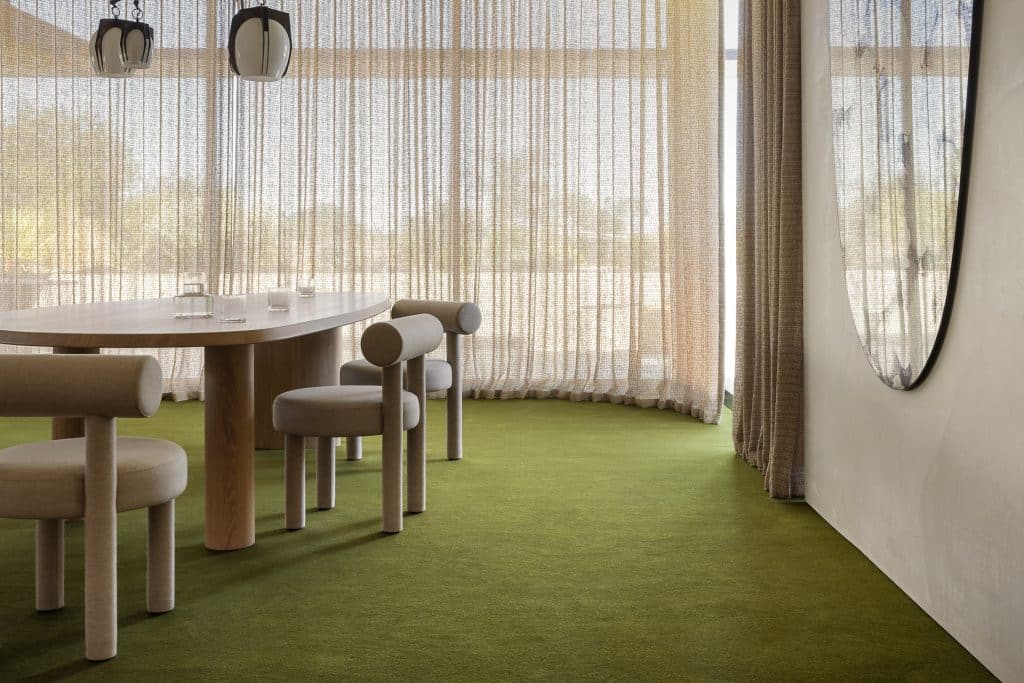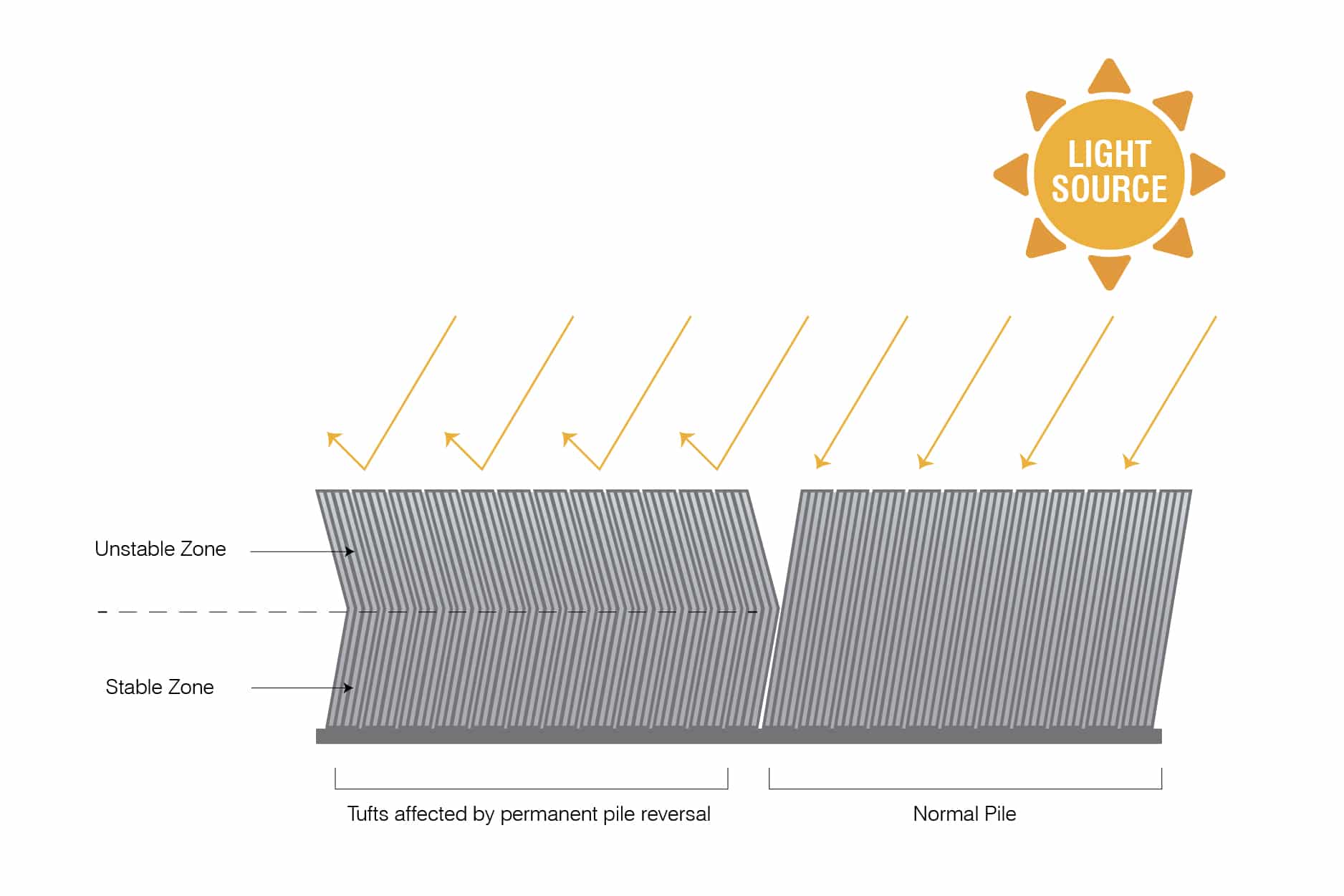The quiet conversation between light and fibre – understanding the difference between shading and permanent pile reversal in cut pile carpets.
Carpets do more than cover a floor – they define spaces, soften acoustics, cradle footsteps and infuse interiors with warmth and character. The choice of carpet fibres and construction, whether cut pile, loop pile, natural fibres, man-made fibres or blended fibres influence how a space feels and how it is experienced. For architects, designers and specifiers understanding how carpets behave is key to ensuring the right product is selected. Here we explore many of the terms used with carpets and explain them in a little more detail.
SHADING: The play of light
Probably the most common used term, however often misused; Shading is the visual effect caused by the reflection of light on cut pile fibres. It appears as lighter or darker areas across the carpet, changing as the viewer moves or the light shits throughout the day. Shading is temporary and purely optical and does not impact performance or durability.
FOOTMARKING / TRACKING: Temporary impressions
Footmarking or tracking occurs when fibres are compressed or indented in one direction, in small, localised areas often from furniture, cleaning or foot traffic. The impressions are generally temporary and can recover naturally over time or with gentle grooming such as vacuuming or brushing.
PERMANENT PILE REVERSAL: Structural Tonal Variation
Watermarking, pooling, or puddling or otherwise known as permanent pile reversal happens when carpet fibres are twisted or pressed in one direction and remain fixed, creating subtle but permanent tonal variations – most often resembling a water like appearance. This is a rare and unpredictable occurrence. While permanent pile reversal does not affect performance or durability, it cannot be reversed, brushed out or changed.
Shading, footmarking, tracking, watermarking and permanent pile reversal in carpets and rugs are all part of their charm that leave quality and performance untouched. These gentle shifts create texture and depth, responding to its setting and reflecting light that interacts with the space, adding depth to the overall design narrative.

